JEFF ROBINSON: LIBRIS | SPINE
“There are also letters on the spine of each book; these letters do not indicate or prefigure what the pages will say. I know that such a lack of relevance, at one time seemed mysterious…”
Jorge Luis Borges, The Library of Babel
What can a large number of books mean, piled up, arranged in an order in which their contents are hidden and of them we can only see the upper cut of their inner body, devoid of information? Books turned into an anonymous mass within an intentional accumulation, only interrupted by a title that tells us what may be in them.
A title, which announces a particular narrative, is placed as a concrete point of vision. It expresses the sharpness of the artist’s individual system of understanding of the content presented through a careful technical mastery of painting. With it, he builds that known object “the book”, but only as a sign, in the space of the wall of unknown books that confine it. A place where it manages to rise in its presence and in that story that only it can provide us, simply by the engraved spine that differences it from the rest.

Jeff Robinson
Untitled, 2018
Acrylic on canvas
36” x 48”
Engraved signs, titles that express connections that approach the reader in the surplus, in the context of the illusion created by the concealment of its contents. The individual appearance of a desired text invites us to recognize ourselves, the book, its ideas, its narratives and its worldviews, which are tied to the one who understands its existence.
Libris (2020), which means books in Latin, by the artist Jeff Robinson (Summit, NJ, 1959- ) leads us through the labyrinthine accumulation of texts, with no possible sight of their contents, within a space devoid of emptiness. This strategy plays at the suspension of the original meaning of the books, where the artist questions their virtue as objects of consumption or desire, as they are led to the flatness of the canvas within an illusory reality created by Robinson. In this reality, the artist listens attentively to the sound of pictorial materiality and of the knowledge that values “(…) the knowledge of the object, the knowledge of the sensitive world —which is approached and narrated— the perceptive knowledge and the knowledge of the particular language. Of cultural code. Of personal recoding”.1
The artist conducts the visual materiality, the knowledge and the cultural modes arranged in the intentional stacks. In a personal way, he recodes them as, in each one, he generates a point of attention that stops the gaze wandering through the surface of the work, that suspends it in the partial access of information, in the visible connection offered by the title engraved on the outer spine of the book.
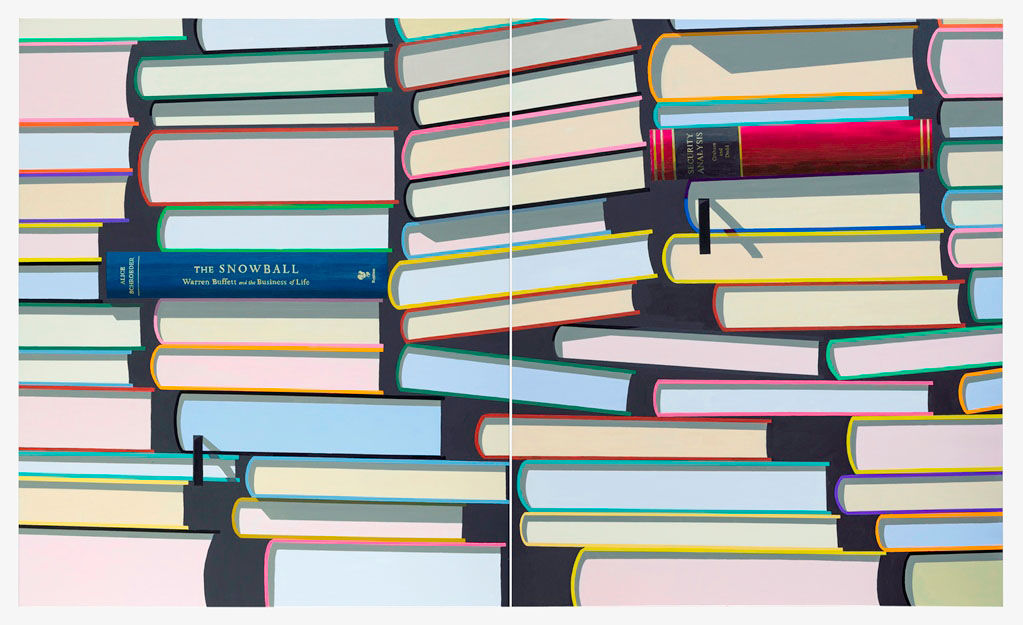
Jeff Robinson
The pillars, 2020
Acrylic on canvas
72” x 120” x 2 ½”
Hence, that point of attention, that title, is not shown in the random encounter but defines contextual facts of realities created by literature or by academic knowledge. This establishes types of existences as in The Pillars (2020) work from which two particular titles emerge as points of vision: The Snowball: Warren Buffet and The Business Life by Alice Schroeder published in 2008, as well as Security Analysis by Graham and Dod published in 1934. These texts are about the lives produced by the planned enrichment and the secure analysis of business. One biographical and the other a study of financial assets, but both pillars of the economic system based on capital.

Jeff Robinson
Goldfinger, 2020
Oil on canvas
30” x 40”
In Libris, Robinson points to the construction of meaning given by particular texts provide, within the links they can generate and the varied worldviews they represent. From the adventures of British agent James Bond, a pop culture hero, in Ian Fleming’s Goldfinger (2020), published in 1959, a bestseller, or in the necessary spirituality in the face of tragedy narrated in John Irving’s A Prayer for Owen Meany, published in 1989 and which is the center of the stack confining Owen Meany (2020).
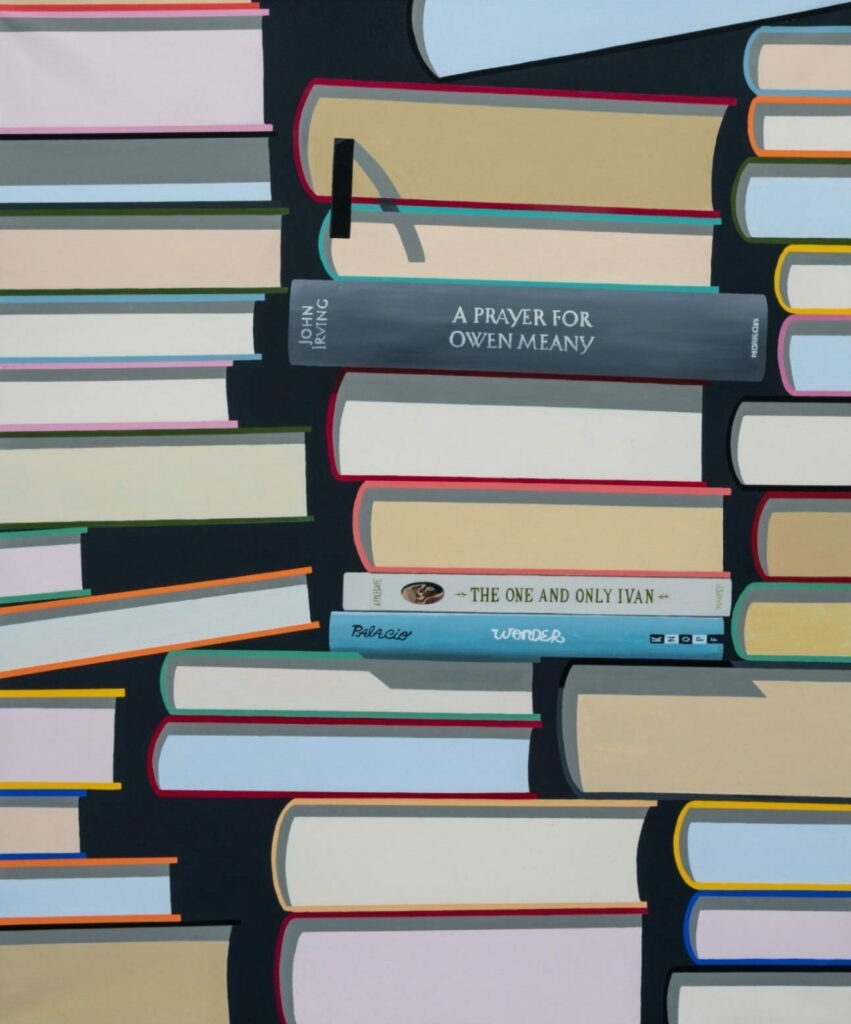
Jeff Robinson
Owen Meany, 2020
Acrylic on canvas
72” x 60”
The title of each work that make up the Libris series affirm the content they possess and, at the same time, the existence of narrative regimes coming from diverse aspects of literary enunciation. All the contents speak of complex systems of life within a playful temporality activated by the artist by bringing them back to our present. Books, like Robinson’s, of which only a fragment is shown, and which are conceived as a necessary invitation to discovery, within the plastic and pictorial wall created in a conscious way, because among the titles that focus our vision appears To Kill a Mockingbird (2020) by Harper Lee, published in 1860, which in its narration leads us through sexual violation and racial problems, but in this space, they cannot be read nor understood.
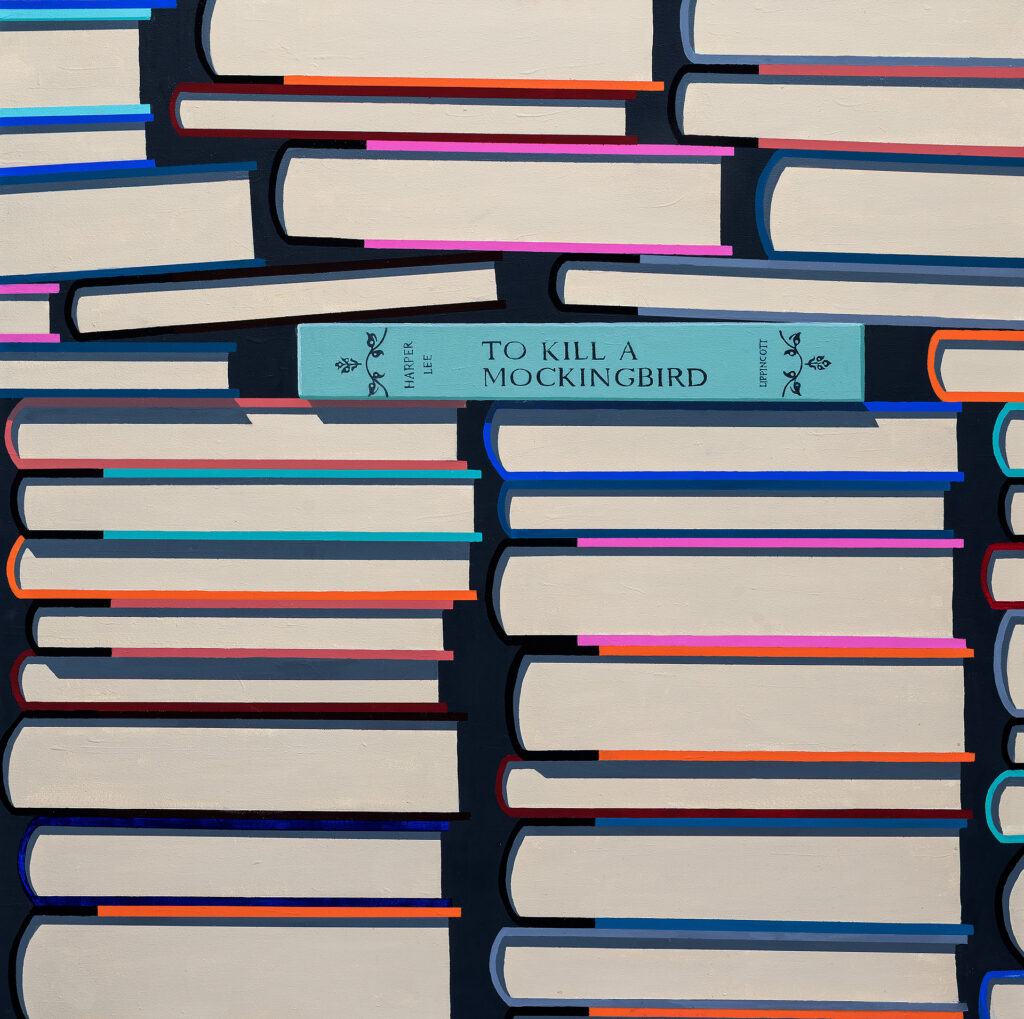
Jeff Robinson
To Kill a Mockingbird, 2020
Acrylic on canvas
48” x 48”
Robinson plays with our methods of knowledge when he obscures the content of the book, but from a simple sign, the title, the artist opens the crack in the wall of texts and thus generates the rupture of continuity, not only of books as anonymous objects, but of the vision of a temporality of literature and of what it can encompass as interpretation. His points of stopping and suspending the gaze are centered on diverse narrative temporalities such as Francis Scott Fitzgerald’s The Great Gatsby (2020), published in 1925, a fable of the American dream, of youth and decadence, or Joseph Heller’s Catch-22 (2020), published in 1923, a novel of anti-war fiction.

Jeff Robinson
Catch-22, 2020
Oil on canvas
30” x 40”
Timeless literature, anonymous stacks that seem impersonal because their narrative content, the entertainment or conflicts that reading them can provide, or the simple desire for possession that books carry with them, are not revealed. Beyond that, Robinson reactivates and recodes those titles by placing them in a new presence, the pictorial one, which makes it impossible for us to venture into what they contain and which the title of each work of Libris affirms as its system of enunciation and concealment of the content of the text.
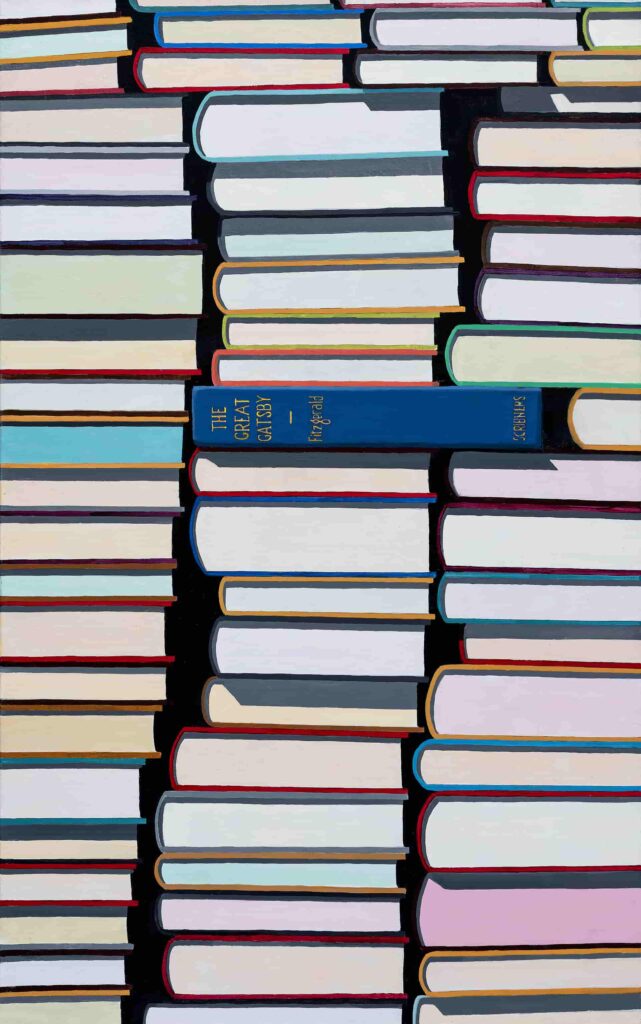
Jeff Robinson
The Great Gatsby, 2020
Oil on canvas
48” x 24”
The Catcher in the Rye (2020) by J.D. Salinger, published in 1951, is one more part of this game of anonymous, impenetrable, updated, and timeless wall, made by the artist. Its narration on the conflicts of adolescence and sexuality are closed, impossible to read. Each book, each title, has changed its system of narration, perception, and representation.
These particular titles are now impossible to read and are imprisoned by the pictorial and interpretative codes with which the artist configures its enigmatic walls and illusory accumulations. Libris has transmuted the original function of the books, they are only a quote, as they have been converted into distant, strange, and mysterious connections of titles that are found on a surface without apparent depth. Only an indentation in the continuum of a production that, like that of books, speaks of the times and of human affectations. A production in which Robinson enters from another point of conceptualization, one that asks: What is a book? Illusion or appearance? Reality or fiction? Depth or surface?
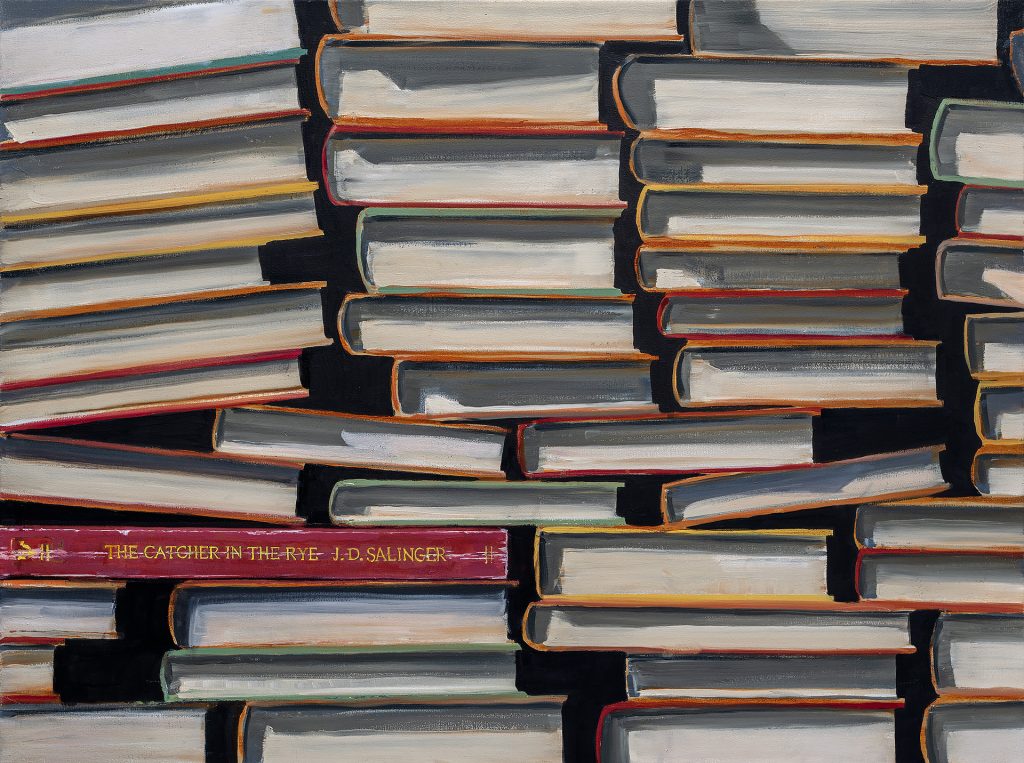
Jeff Robinson
The Catcher in the Rye, 2020
Oil on canvas
30” x 40”
Libris, those engraved spines that announce and promise us something, they are entrance to the humanly possible, of its concerns and amusements, of its conflicts and resolutions. A call for attention within the anonymous mass that accumulates and that is recodified and re-signified by Robinson in Libris shows us that our conflicts continue, that concerns are part of all times, that everything changes in perception but that our desires to be narrated and read last forever.
[1] Ramos, María Elena: ¿Es el arte una forma de conocimiento?, (Is art a Form of Knowledge?) in: Armónico-Disonante (Reflexiones sobre Arte y Estética– Reflexiones on Art and Aesthetic), Caracas, Andrés Bello Catholic University, p. 202 (The Cursive is Ours)
Visitors
